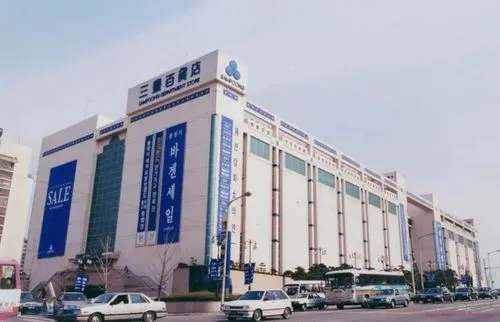On Thursday, June 29, 1995, in a prime location in Seoul's Rainbow District, South Korea, a lavish department store was bustling as usual, with a steady stream of shoppers. At about 5:50 p.m., with a loud noise, accompanied by the sound of wall breaking, the support columns on the first floor collapsed one after another, and in just 20 seconds, the shopping mall with five floors above ground and four floors underground collapsed from top to bottom into flat ground, concrete stones instantly filled the underground space, and 1500 people who had no time to evacuate were buried under the rubble.
After the statistics of the accident, a total of 502 people were killed, 937 people were injured, and the direct economic loss was as high as 270 billion won (216 million US dollars), which was one of the major accidents that caused great casualties due to the natural collapse of buildings in the whole world, and it was also the most serious accident in South Korea in peacetime.
The collapsed building is a shopping department store owned by the Mitsune Group, which has been popular with the public since its opening on July 7, 1990, because of its trendy appearance and exquisite goods, with a daily flow of 40,000 people and an average turnover of 500,000 US dollars, once becoming the most iconic building in South Korea.
However, behind such a luxurious, huge shopping paradise hides the greed and ignorance of human nature. This accident is not a natural disaster, it is not an accident, it is the ruthless trampling of unscrupulous businessmen on the construction industry, and it is the inevitable result of all kinds of opportunism.
As the president of the Sanfeng Group, Li Tao, in order to maximize the interests, privately changed the architectural drawings, added the foundation that should have borne the four-story building to the fifth floor, and cancelled some of the load-bearing columns to install escalators, and the remaining load-bearing columns were also short of two pounds and used rusty steel bars that did not meet the standards, and the construction process also used sea sand and non-standard cement with severe corrosive properties on metal components. It also makes the already overloaded building crumbling.
Just two months before the collapse of the building, there was a crack in the roof, but the staff did not take it seriously, until the day of the incident, the building still had some of the walls falling off, the wall surface was broken, the building was shaking and other signs, but they did not arouse the vigilance of the management, and still took a fluke.
Finally, on June 29, the building collapsed in an instant, and 502 undead became the funerary items of Sanfeng Department Store.
Afterwards, 21 relevant criminal suspects led by Li Tao, chairman of Sanfeng, were convicted, 12 of whom were government officials, involving embezzlement, bribery, fraud and other criminal acts.
The first person responsible for the accident, Li Tao, was finally sentenced to only 10 years and 6 months in prison for the crime of "death by negligence in business", and his son Li Hanxiang was sentenced to 7 years in prison.
The demon who is smoked by the interests will eventually suffer the consequences of his own, and the heart that is manipulated by the fluke psychology will certainly not be lucky, and the tofu slag project of Sanfeng Department Store buries the conscience of people who have been destroyed, sad, sighing, and sorry. #Historical Memory# #韩国 #
